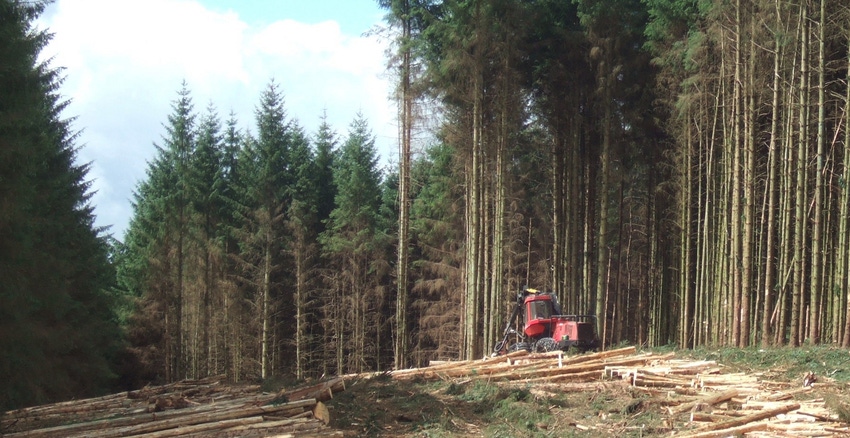Why aren’t more forests certified?
September 22, 2015

Forests are responsible for an incredible range of environmental, social and economic benefits. They provide clean air and water, home to vast amounts of biodiversity, wood for products we use every day and livelihoods for more than a billion people.
Active forest management, particularly sustainable forest management (SFM), helps create a balance in the relationship between the needs of society and the preservation of forest health and diversity.
Forest certification, first introduced in the 1990s, is one tool that strives toward this laudable goal of sustainable forest management. In many ways, forest certification has been quite successful. However, there are still many companies looking to purchase forest products from SFM and find that there is much greater demand than supply of certified forest products. The natural next question often asked is “Why aren’t more forests certified?”
The answer is a bit complex, unsurprisingly, due to a number of factors that influence many voluntary validation or certification processes. It also depends on who you ask. A paper manufacturer might tell you that forest certification programs are too complex and expensive. A corporate brand owner might say that there is too much of a political atmosphere surrounding competing certification programs. A forest owner might say that they do not receive the economic benefit that they expect. The same forest owner might also argue that their forest is already sustainably managed and certification is a costly “check in the box” exercise.
Despite this challenging climate, forest certification has shown enormous benefits toward achieving the goal of sustainable forest management. Demand in many industry sectors—solid wood, paper and packaging—is much greater than the supply of certified wood.
So the question may not be “Why aren’t more forests certified” but rather “How do we better deliver the value of forest certification?” The forest products industry has gone through an amazing amount of change since the 1990s. Maybe it’s time for an update?
It is clear that the value of forest certification is there but may need to re-think how to deliver optimal value.
Forest owners and managers stated, in work being done by the Sustainable Packaging Coalition’s Forest Products Working Group (FPWG), that forest certification could add value by:
• Doing a better job of demonstrating sustainable forest management practices to stakeholders; and
• By building healthy markets for forest products.
Corporate brands, another key driver of SFM, state that forest certification could add value by:
• Focusing on mitigating risk; and
• Being a tool to help build trust with their customers.
The question of “how to better deliver value” was the fundamental question that the FPWG, a collaboration of 20+ companies across the supply chain, has also been working together to answer. Through a series of interviews, workshops and research, the group has found that the underlying issue is that forest certification needs to offer a more compelling value proposition to small private landowners in the United States. Likewise, forest certification also needs to offer a more compelling value proposition to brand owners.
The FPWG interviewed numerous members of the value chain including landowners, foresters, loggers, merchants, printers, manufacturers, brand owners, associations, consultants and more. The FPWG hosted two in-person Summits where we brought value-chain members and representatives from the Forest Stewardship Council (FSC), Sustainable Forestry Initiative (SFI) and American Tree Farm System (ATFS) to discuss strategies to better drive the value of forest certification. The findings were numerous, often complex and, not surprisingly, varied enormously.
The surveys, interviews and research conducted during the project found that many stakeholders find certification to be overly complex, expensive and that it could do a better job focusing on how to deliver optimal value. Along with the value-adds suggested for small private landowners and brand owners, our findings suggested additional potential strategies including better dialogue across the supply chain and the need to explore innovative and cost-effective ways to provide assurance of SFM when certification is not an option.
It is important that we find better ways to stimulate dialogue across the value chain—from landowners to brand owners. One area that would be a good place to start is simply educating the marketplace on just how exactly forestry works in the United States. Who owns forests? Where are our forests? Answers to some of these basic questions might surprise many people.
For example, an interesting survey by the U.S. Department of Forestry asked family forest owners to choose from a list of 10 categories which purpose most aligned with the reasons why they maintain woodlands. Of all the 10 reasons, timber sales came in last, behind other factors such as family heritage, beauty and scenery, hunting and privacy. For SFM programs to work, we need to better understand what motivates family forest owners, and design incentives that are better aligned.
Last but not least, we need to figure out a strategy for gaining assurance of Sustainable Forest Management when certification is not an option. The FPWG is continuing to explore innovative strategies that include input from the entire value chain, including family forest owners. We need to revisit existing assumptions and explore other models of innovation that can expand on the successes of forest certification to date. To this end, the FPWG is working directly with small, private landowners and brand owners to find strategies where assurance of SFM can be shared efficiently through the supply chain.
In the spirit of innovation, the FPWG welcomes input from multiple stakeholders as we continue to tackle these complex issues, and begin answering these questions with the goal of finding innovative strategies to drive the value of forest certification.

Tom Pollock is senior manager, Forest Products with GreenBlue’s Sustainable Packaging Coalition. For more information about the Sustainable Packaging Coalition and the Forest Certification Industry Leadership Committee, visit www.sustainablepackaging.org.
About the Author(s)
You May Also Like


